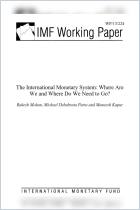
Read or listen offline
Amazon KindleRecommendation
This slender, surprisingly thorough volume provides an insider’s view of four region’s storm-tossed financial crises (Latin America, ’82, Mexico ’94, Asia, ’98 and Russia ’98). Author Alexandre Lamfalussy, a key figure at the Bank for International Settlements during some of these crises, discusses the history of these events and the problems confronting crisis managers at the time. He lays out the critical background facts of each crisis and draws clear commonalties and contrasts among them. He also offers thoughtful, reasonable prescriptions for avoiding, minimizing and managing future crises. Then, he points out some little-discussed aspects of globalization in the developed world, which contributed to the crises. Though Lamfalussy’s style is dense and somewhat academic, his content is worth the work. getAbstract recommends this book as valuable reading (and a financial lifejacket) for anyone doing business or investing in an emerging market, for corporate executives working abroad and for public policy makers worldwide.
Summary
About the Author
Alexandre Lamfalussy was president of the European Monetary Institute from 1993 to 1997. He has served as general manager of the Bank for International Settlements. He is now a professor at the Institute of European Studies at the Catholic University of Louvain.















Comment on this summary